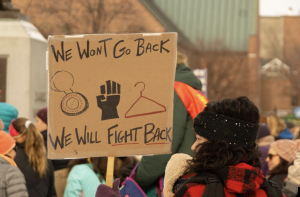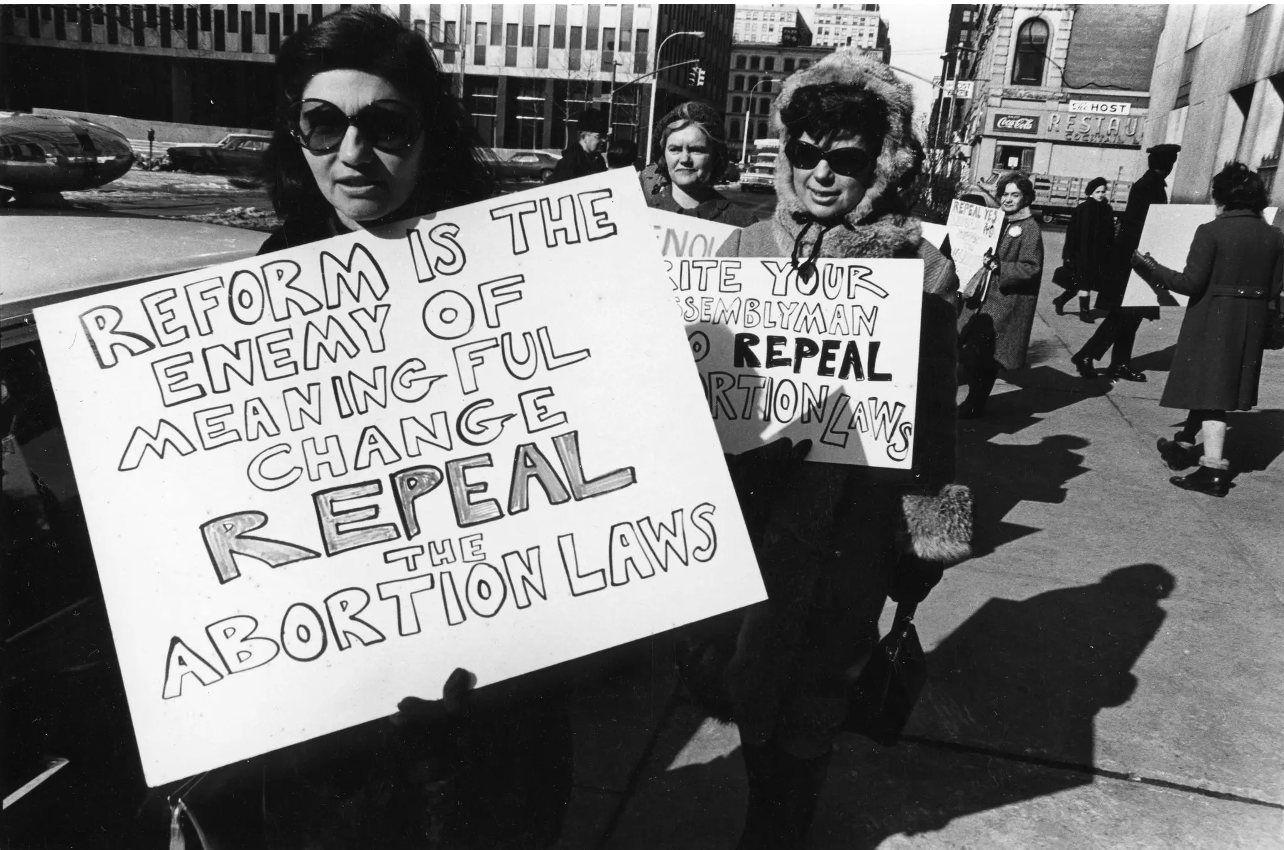Introduction to Reproductive Freedom: A Series
A short while ago, Hard Crackers sent an invitation to people who we knew had been active in various reproductive freedom projects over the last fifty years to help us think through the issues and challenges involved in developing an effective radical strategy to secure unrestricted access to abortion for all women. We were very pleased with the responses we received and will be posting them on a regular basis over the next two months. We would like to thank all those who have contributed.
If we receive additional contributions, we will add them. We also welcome comments in response to all the posts. The text below has been slightly modified from the original invitation.
An Invitation
In light of the threat posed to all aspects of reproductive justice by the reversal of the Supreme Court’s Roe decision of 1973, Hard Crackers has invited individuals who have been activists in the abortion rights struggle in different periods over the last five decades to share their stories about their initial involvement in the struggle, the ways in which the legal and political contexts of the times shaped the activities they engaged in and the implications of previous moments of struggle for the battles that lie ahead. We’re especially interested in exploring the limits of litigation and lobbying that are focused on reforming, rather than repealing, abortion laws. While the great majority of participants will be from the United States, we hope there will also be several from other countries.
In the late 1960s, in large part because of the profound influence of participation in the Civil Rights and black liberation movements, a modern women’s liberation movement emerged. The demand for abortion was a central but not exclusive focus; in many ways, they anticipated the approach of the current Reproductive Justice movement. The early movement was decidedly radical. A short flyer, distributed on the occasion of a Counter-Inaugural March in Washington in 1969, memorably headlined “Women, Let’s Give Them Back Their Vote!”, suggests an early recognition that the realization of women’s liberation would not be found within the routine functioning of political democracy.
In the early period of education, consciousness raising, direct assistance to those seeking abortion (up to and including the training of non-doctors to perform abortions as exemplified by the Janes in Chicago), and numerous personal story-telling by women who had had abortions, the views and actions of radical women liberationists were dominant. More important, however, they became widely popular. Their position about abortion laws was summarized in the phrase “Repeal not reform!” The proud and brash activism of those days relatively quickly and dramatically changed the national landscape and placed abortion rights in the spotlight.
The upsurge of activism disturbed the powerful and it became evident to them that something needed to be done. In the early 70s, a legal challenge to abortion laws was initiated and eventually arrived at the Supreme Court. Apparently, the jurors knew what decision they wanted and scrambled to find a constitutional basis for it. They found a precedent for their argument in the Griswold case which had found that states could not prohibit the distribution of contraceptives to married people. The constitutional reasoning hinged on the invocation of privacy and equal protection from the 8th Amendment and 14th Amendment. The enshrinement of the notion that abortion was a decision to be made between the woman and her physician effectively made doctors (who had preserved and enhanced their professional authority to determine who was fit and not fit for an abortion) into the victors. While the advance for reproductive freedom was real, its legal grounding was modest.
In spite of some warnings to the contrary, Roe became the defining limit of abortion defense.
It secured, however tentatively, rights for some at the expense of rights for all. It led to several decades of a preoccupation with lobbying and litigation and the replacement of creative activism by passive voting.
For a few years after 1973, the Supreme Court reaffirmed the basic findings and guidelines of the Roe decision. But as early as 1977 and 1980, decisions came that limited real access by approving the denial of governmental funding for some abortions, most notably endorsing the 1976 Hyde Amendment which prohibited the use of federal funding (primarily Medicaid) for abortions. Gradually, more and more decisions approved state restrictions (including additional requirements for abortion clinics, parental consent, warning scripts about the dangers of abortion, and waiting periods).
In the mid-1980s, a militant anti-abortion movement began bombings of clinics and Operation Rescue style confrontations with women trying to enter clinics. Mainstream abortion advocates continued to emphasize litigation and lobbying. In the early 90s, anarchist-feminists initiated radical grass-roots activism. Instead of the slogan “We’re pro-choice and we vote,” these activists often marched behind a banner reading “We’re pro-choice and we riot!” Once again, those voices echoed the essential convictions of the early calls for reproductive freedom.
Since then, medical innovations have provided women with many more resources to avoid or terminate pregnancy. The “morning after pill”, that a woman can take after she thinks there’s a chance that she might have become pregnant, is now available over the counter—after a successful fight with the FDA, led by a group that is now called National Women’s Liberation.
In addition, 30% of abortions in the US are now performed through non-surgical medications. The FDA continues to refuse full approval for over-the-counter provision of the first of the medications—in spite of quite convincing evidence about its safety. As a result, the treatment remains expensive and often difficult to obtain. At the same time, the opposition to abortion has reached an unprecedented level; judicial, legislative and direct-action victories have emboldened the anti-abortion forces.
Reproductive justice has become an international issue and movement. As a result of the fact that abortion is illegal in many countries, an international movement has emerged to both challenge anti-abortion laws in countries and to provide direct assistance to women needing abortions in countries where they cannot legally and safely obtain them.
We hope that what we publish will aid and abet the development of more powerful movements.
The Hard Crackers Editors

The first in our series is a call to action by long time activist and revolutionary, Beth Henson.
What we need now is mass illegality and direct action!
Beth Henson
If a couple of pills can abort a pregnancy, then it’s easier than the old days when we had to learn to do abortions hands-on. Jane, the underground network in Chicago, provided 11,000 safe, cheap, illegal abortions until 1973. It’s easier now.
We can find a source for pills and a way to distribute them. And maybe the coming mass civil disobedience of pill-induced clandestine abortions will trigger an uprising.
I had my first abortion in 1970, in New York where it was legal. I don’t remember what it cost; my boyfriend paid half and my dad paid half, plus the plane fare from the Midwest. I stayed with my dad and stepmother in Brooklyn.
The clinic was in midtown. I took the bus. My stepmom offered to come but we weren’t close, so I faced it alone. The clinic was clean and brisk. They gave me a general anaesthetic. When I woke up, the pregnancy hormones were gone. Outside it was bright and cold, St. Patrick’s Day.
My friends had babies and gave them away. They spent all that time being pregnant, with everything paused, and then their lives were severed. Some of them went away and came back and lied about it. My two best friends in high school married at 18 and had babies; both their husbands were crazy but in different ways. Al was bipolar and brilliant and exhausting. Sam was just depressed, and addicted to the codeine in cough syrup. His mother was determined to take the baby, so Penelope had to work whatever job she could get, she got no help and barely kept her daughter.
There are two new films about the Janes in Chicago, who started by referring women to a doctor who performed abortions. Then the doctor quit and the women had no choice. They learned to do abortions themselves: safe, sterile, early abortions. Not rocket science.
Birth control used to be lousy, it probably still is. Hormonal methods, such as pills, carry unknown risks. IUDs can fail. I had an early miscarriage and bled for a month with a Dalkon Shield. The device was defective, thousands were hurt and sued and it was pulled from the market. After that I had an experimental IUD that got changed periodically; the pain from its insertion and removal were excruciating. After that I went back to less reliable, single-use methods, spermicides and a diaphragm.
Men ruin women’s lives every day, with unwanted pregnancies and abandoned kids. Domesticity is a trap for men and a destiny for women. Modernity has divorced us from our sensuous nature, scattered the family, and sent millions of refugees careening from place to place. But as capitalism expands, it draws women into new forms of participation. And the market, invading every opportunity, came up with the means of preventing pregnancy. We don’t have to consent to going backward and we don’t have to beg the state. Prohibition didn’t work when the target was alcohol and it didn’t work against marijuana. Preventing pregnancy has never been easier. Let’s do it.

